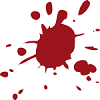4.44: “Quantity Not Sufficient - QNS”
- Page ID
- 123348
\( \newcommand{\vecs}[1]{\overset { \scriptstyle \rightharpoonup} {\mathbf{#1}} } \) \( \newcommand{\vecd}[1]{\overset{-\!-\!\rightharpoonup}{\vphantom{a}\smash {#1}}} \)\(\newcommand{\id}{\mathrm{id}}\) \( \newcommand{\Span}{\mathrm{span}}\) \( \newcommand{\kernel}{\mathrm{null}\,}\) \( \newcommand{\range}{\mathrm{range}\,}\) \( \newcommand{\RealPart}{\mathrm{Re}}\) \( \newcommand{\ImaginaryPart}{\mathrm{Im}}\) \( \newcommand{\Argument}{\mathrm{Arg}}\) \( \newcommand{\norm}[1]{\| #1 \|}\) \( \newcommand{\inner}[2]{\langle #1, #2 \rangle}\) \( \newcommand{\Span}{\mathrm{span}}\) \(\newcommand{\id}{\mathrm{id}}\) \( \newcommand{\Span}{\mathrm{span}}\) \( \newcommand{\kernel}{\mathrm{null}\,}\) \( \newcommand{\range}{\mathrm{range}\,}\) \( \newcommand{\RealPart}{\mathrm{Re}}\) \( \newcommand{\ImaginaryPart}{\mathrm{Im}}\) \( \newcommand{\Argument}{\mathrm{Arg}}\) \( \newcommand{\norm}[1]{\| #1 \|}\) \( \newcommand{\inner}[2]{\langle #1, #2 \rangle}\) \( \newcommand{\Span}{\mathrm{span}}\)\(\newcommand{\AA}{\unicode[.8,0]{x212B}}\)
A technologist is working in the sample intake/processing area of the clinical chemistry laboratory. The technologist notices that one sample tube is labeled, but has no blood in it. The doctor is requesting a TSH analysis. One technologist suggests performing the TSH analysis on another sample. Another technologist suggests simply adding the comment, “QNS”.
QUESTION
- What steps should the technologist take to resolve the problem?
- The technologist looks in the LIS at the records for that patient and sees that a sample for glycosylated hemoglobin analysis was drawn on the same clinic visit, but several hours after the first sample. The technologist also speaks with the ordering physician who indicates that the sample was not time-dependent. Can the glycosylated hemoglobin sample be used to replace the missing sample?
Questions to Consider
- Should you attempt to find another sample?
- How could you determine if another sample were available?
- What type of tube is a glycosylated hemoglobin drawn in?
- Answer
-
- The technologist should not QNS the test until it is determined if another sample can be used. By checking in the LIS the technologist can determine if another is available. The technologist must also determine if the original sample was a time-dependent sample.
- The technologist must then determine if the method in use for measuring TSH can use a sample treated either with heparin or with EDTA. If either type of sample can be used, then the glycosylated hemoglobin sample can be used.
Answers to Questions to Consider
- The short answer is yes, but the longer answer is to take care when doing so. Very often a sample from a patient cannot be easily redrawn. If the patient is being seen as an outpatient (the usual situation) then the patient must make an additional clinic visit, which could be costly in terms of time (perhaps a loss of a work day) and money (loss of work, babysitter, etc.). So trying to find another sample to replace the missing one can have a very large impact on the patient’s life. On the other hand, if the sample is a challenge test (e.g., glucose, TRH, dexamethasone) or if the result is time-dependent because it is subject to diurnal variation (e.g., early morning cortisol, see page 69), or is affected by specific lifestyle factors (e.g., meals, see page 69); then a sample drawn at another time might not be useful.
- With a laboratory information system (LIS) now available in every laboratory, it is usually very simple to determine if another sample might be available, somewhere. See Chapter 16, p 323.
- All glycosylated hemoglobin samples are anticoagulated, either with heparin or with EDTA. The technologist has to determine what type of tube the glycosylated hemoglobin was drawn in.


